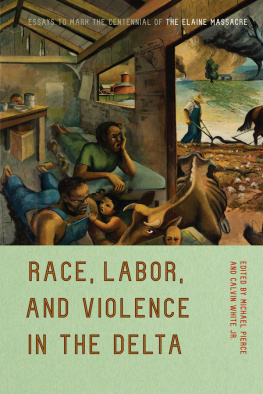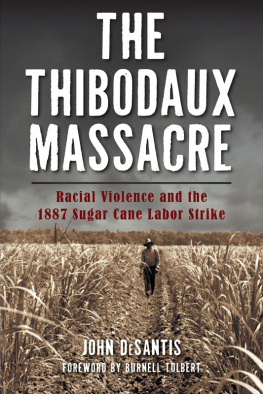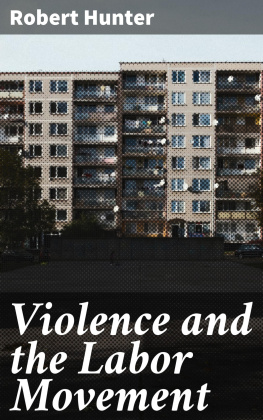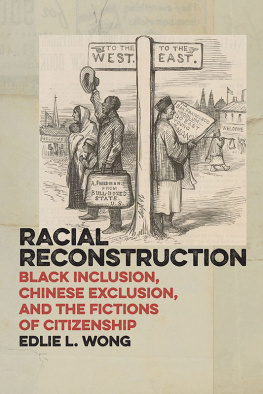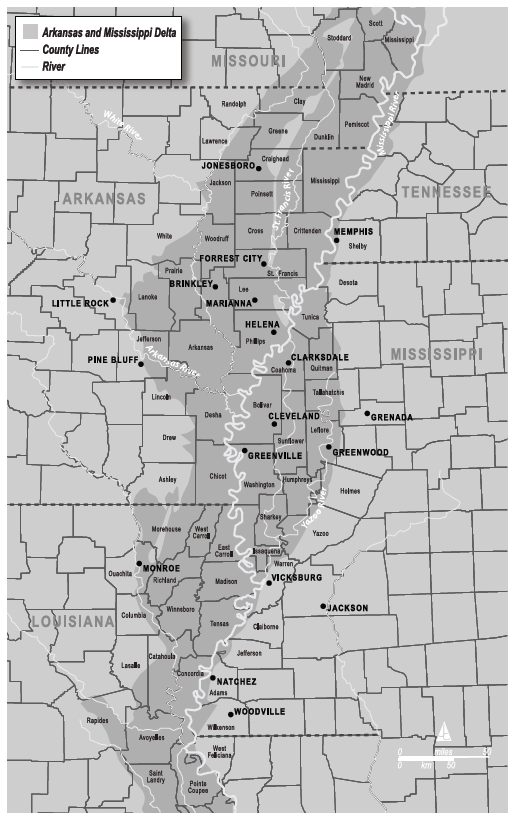
Cartography by Jack Critser.
Copyright 2022 by The University of Arkansas Press. All rights reserved. No part of this book should be used or reproduced in any manner without prior permission in writing from the University of Arkansas Press or as expressly permitted by law.
ISBN: 978-1-68226-205-4 (cloth)
ISBN: 978-1-68226-206-1 (paper)
eISBN: 978-1-61075-775-1
26 25 24 23 22 5 4 3 2 1
Manufactured in the United States of America
Designed by Liz Lester
The paper used in this publication meets the minimum requirements of the American National Standard for Permanence of Paper for Printed Library Materials Z39.481984.
Library of Congress Cataloging-in-Publication Data
Names: Pierce, Michael C. (Michael Cain), editor. | White, Calvin, 1973editor.
Title: Race, labor, and violence in the Delta: essays to mark the centennial of the Elaine Massacre / edited by Michael Pierce and Calvin White Jr.
Other titles: Essays to mark the centennial of the Elaine Massacre
Description: Fayetteville: University of Arkansas Press, 2022. | Includes bibliographical references and index. | Summary: This essay collection grew out of a conference marking the hundredth anniversary of one of the nations deadliest labor conflictsthe 1919 Elaine Massacre, during which white mobs ruthlessly slaughtered over two hundred African Americans across Phillips County, Arkansas, in response to a meeting of unionized Black sharecroppers. The essays here demonstrate that the brutality that unfolded in Phillips County was characteristic of the culture of race- and labor-based violence that prevailed in the century after the Civil WarProvided by publisher.
Identifiers: LCCN 2021060183 (print) | LCCN 2021060184 (ebook) | ISBN 9781682262054 (cloth; alkaline paper) | ISBN 9781682262061 (paperback) | ISBN 9781610757751 (ebook)
Subjects: LCSH: African AmericansViolence againstArkansasArkansas DeltaHistory19th centuryCongresses. | African AmericansViolence againstArkansasArkansas DeltaHistory20th centuryCongresses. | African AmericansArkansasArkansas DeltaEconomic conditions19th centuryCongresses. | African AmericansArkansasArkansas DeltaEconomic conditions20th centuryCongresses. | Labor unionsOrganizingArkansasArkansas DeltaCongresses. | Night riding (Racial violence)ArkansasArkansas DeltaCongresses. | Elaine Massacre, Elaine, Ark., 1919Congresses. | Arkansas Delta (Ark.)Race relationsCongresses. | Mississippi River Delta (La.)Race relationsCongresses.
Classification: LCC E185.93.A8 R335 2022 (print) | LCC E185.93.A8 (ebook) | DDC 976.700496073dc23/eng/20211222
LC record available at https://lccn.loc.gov/2021060183
LC ebook record available at https://lccn.loc.gov/2021060184
COVER IMAGE: Joe Jones, The Struggle in the South, 1935 Commonwealth College Mural, oil on Masonite. Courtesy of the Joe Jones Family; University of Arkansas at Little Rock (Center for Arkansas History and Culture and Department of Art and Design).
COVER DESIGN: Erin Kirk
This project was supported by the Blair Legacy Series, a conference series of the University of Arkansas Diane D. Blair Center of Southern Politics & Society.
To the men and women who fought against economic
and racial oppression in order to live what they believed
to be their true versions of freedom. May we never forget.
And to Trish, Ben, Sam, Shatara,
and Monroe, as inspirations always.
ACKNOWLEDGMENTS
The conference marking the centennial of the Elaine Massacre and this volume were both made possible by the financial and administrative support of the University of Arkansass Diane D. Blair Center of Southern Politics & Society and Fulbright College of Arts and Sciences. Special thanks go to Angie Maxwell, Todd Shields, Kim Gillow, and Melinda Adams. The University of Arkansas Humanities Center and the University of Arkansas Department of History provided additional help. Our colleagues at Philander Smith College and the Mosaic Templars Cultural Center in Little Rock generously hosted the conference, showing scholars from across the nation the rare combination of professionalism and warmth that has long characterized both institutions. The efforts of Christina Schutt and Tamika Edwards are especially appreciated.
The contributions of other participants at the conference have improved this volume. These very fine scholars include Dianna Freelon Foster, Alison Greene, Karlos Hill, Story Matkin-Rawn, Brian Mitchell, Susan ODonovan, Adolph Reed Jr., Toure Reed, Jarod Roll, Kenneth W. Warren, Patrick G. Williams, and Nan Woodruff.
At the University of Arkansas Press, Mike Bieker, David Scott Cunningham, James Fraleigh, Melissa King, Liz Lester, Charlie Shields, and Jenny Vos deserve praise for their expertise and professionalism. They have supported this project from the get-go and made the publication process as painless as possible.
Last but not least, thanks go to the University of Arkansas at Little Rocks (UALRs) Center for Arkansas History and Culture (CAHC) for restoring Joe Joness The Struggle in the South and allowing us to use a portion of it on the cover. Jones painted the mural in 1935 for installation at Commonwealth College, a left-wing institution that was located near Mena, Arkansas. Abandoned when the college closed in 1940, the mural deteriorated until rescued by the folks at UALR. The beautifully restored mural is now on public display at UA Little Rock Downtown in the River Market District. CAHC director Deborah Baldwin and gallery director Brad Cushman deserve special gratitude for leading the conservation and preservation efforts and giving us permission to use the work.
INTRODUCTION
In late September 2019, seventeen historians from across the country traveled to the Mosaic Templars Cultural Center in Little Rock, Arkansas, to participate in an academic conference that marked the hundredth-year anniversary of the Elaine Massacre. Sponsored by the Diane D. Blair Center for the Study of Southern Politics & Society at the University of Arkansas, Fayetteville, the two-day conference ultimately resulted in the publication of this edited collection of essays.
The Elaine Massacre ranks among the deadliest episodes of both racial violence and labor suppression in the nations history. It began on September 30, 1919, when a planter-directed posse of whites disrupted a meeting of the Progressive Farmers and Household Union of America near the tiny town of Elaine in southern Phillips County, Arkansas. Members of the posse shot into the church, in which nearly a hundred Black union membersmostly tenants, sharecroppers, and agricultural laborerswere meeting to coordinate collective action to prevent the worst abuses of the plantation system, especially the dishonest accounting that cheated the workers out of their promised shares, impoverished them, and perpetuated the peonage that kept them unfree. After those assembled in the church returned fire, possibly killing a posse member, white gangs flooded the area and began four days of indiscriminate killing of those African Americans suspected of being union members.
The exact number of African Americans murdered that fall in the cotton fields near Elaine will never be known. White authorities probably never believed that the Black victims were worth counting and had reason to minimize the official numbers. Estimates of the number of deaths run into the hundreds. But some things are certain. The victims were not killed solely because of their race, nor were they killed just for joining a labor union (white people could join unions with little threat of death). They were killed because they were African Americans who refused to submit to the planters and organized to fight for economic justice.

